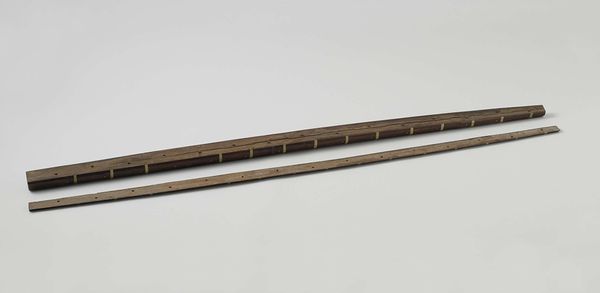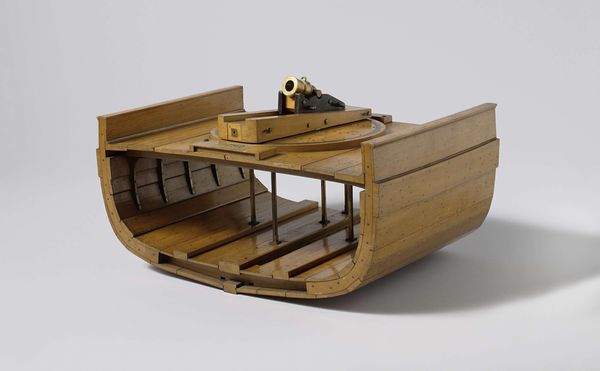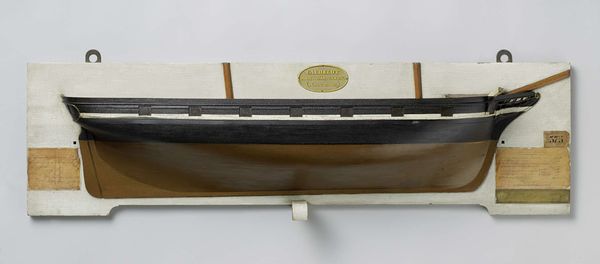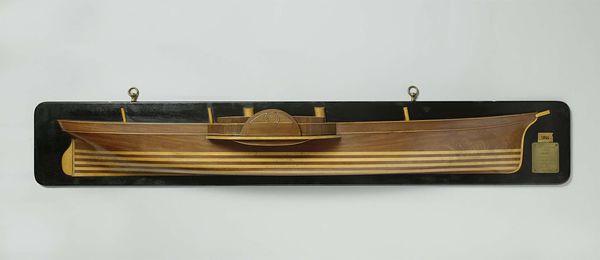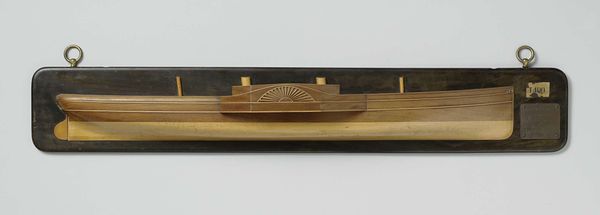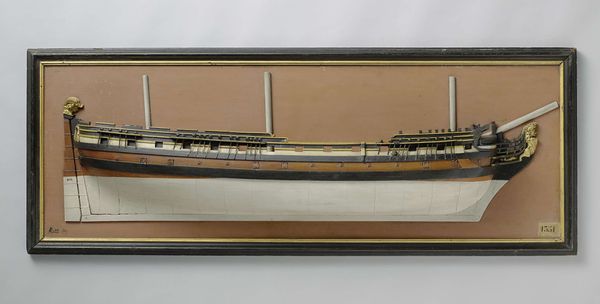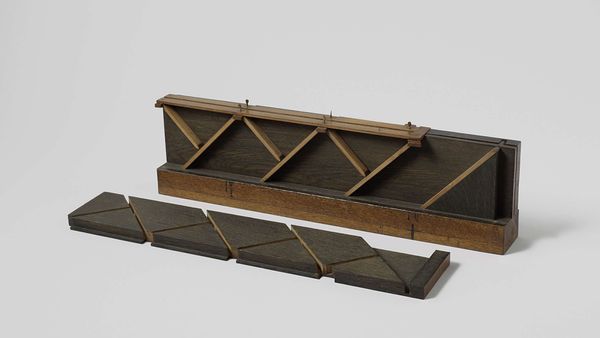
sculpture, wood, architecture
#
3d model
#
3d rendering
#
3d printed part
#
plastic material rendering
#
virtual 3d design
#
product design photgrpaphy
#
3d shape
#
prop product design
#
sculpture
#
metallic object render
#
wood
#
product render
#
architecture
Dimensions: height 32 cm, width 313 cm, depth 70 cm
Copyright: Rijks Museum: Open Domain
Curator: Ah, the "Model of a Dry Dock," crafted back in 1866. Editor: It's oddly calming, in a way. A stoic little stage set for something momentous. The precise geometry contrasts sharply with the implied drama of ships rising and falling. Curator: Drama, absolutely. Dry docks are about revealing the underbelly, the secret hurts of enormous vessels. Think of what a potent symbol the ship itself has been – journeys, wars, trade… And then to see it vulnerable, exposed! Editor: Makes you consider hidden histories. All those barnacles scraped away, the layers of paint built up over decades – whispers of distant ports clinging to the hull. Curator: The artist behind it, Rijkswerf Willemsoord, really understood that theater of repair, I think. Using, wood and other unspecified materials—it emphasizes the humanity, even in something so industrial. Editor: Exactly. Wood, which represents nature but it is fashioned, shaped to control nature, in some respect. Almost like containing a maritime beast, with the solid construction. Does it hint at mankind's ambition, our impulse to master every environment? Curator: I like that—the ambition encapsulated. Perhaps the model itself is symbolic: a contained idea of control. And it fits in that era so well—the age of empires believing they could master all the oceans. Editor: You know, even a structure intended for mere utility accrues such weighty symbolism through use and time. Each stain, each imperfection probably embodies thousands of stories. Curator: Indeed. This little sculpture is truly more of a prompt for contemplation about much larger dramas. Editor: Now I see it too!
Comments
No comments
Be the first to comment and join the conversation on the ultimate creative platform.


